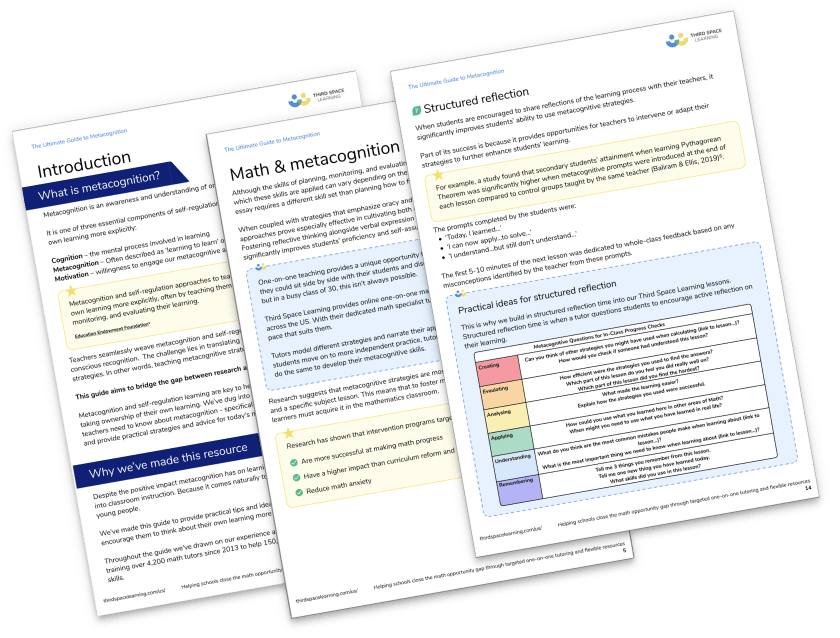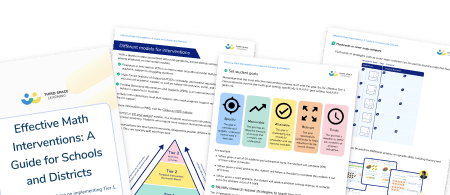Addressing Math Misconceptions: The 4-Stage Process To Identify And Correct Misconceptions, Tested In Over 700,000 Lessons
At Third Space Learning, we teach around 7,000 online math lessons every week as part of our 1-to-1 AI math tutoring programs. That means 7,000 opportunities for students to make mistakes, and for Skye, the AI math tutor, to correct them.
Mistakes come in all sorts of different forms. Some can be as simple as not reading the question properly – something we’re all familiar with! Others may arise from not understanding what is being asked, understanding the question but making a calculation error, or forgetting the method to find the answer.
But sometimes a student will make a mistake that suggests a deeper lack of understanding of mathematical concepts, which can’t be solved simply by providing the correct answer in its place – a misconception.
What are misconceptions in mathematics?
Consider the following math problem: two students are asked to word out ‘0.3 x 30’.
Student A answers as follows, showing their working:
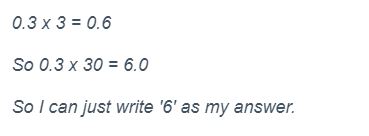
Student B answers like this:
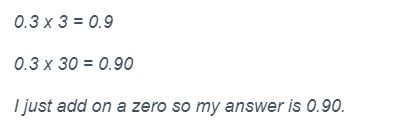
Both answers are wrong, but Student A has made a mistake where Student B has made a misconception.
Student A has made a simple and relatively common multiplication error: 3 x 3 = 6 instead of 9. Their fundamental understanding of multiplying decimals by powers of 10 appears to be sound.
Student B seems to have applied the ‘trick’ method of multiplying by 10 to the equation, and simply added a zero to the end of the correct initial calculation. This betrays a lack of number sense and understanding of the concept of multiplying decimal numbers by powers of 10 – a mathematical misconception.
Read more: Math Tricks or Bad Habits?
Effective Math Interventions: A Guide for Schools and Districts
Clear up math misconceptions with our guide for school leaders, administrators, and interventionists on implementing successful math interventions.
Download Free Now!
Why is it important to address misconceptions?
Calculation errors are commonplace and usually the result of ‘slips of the mind’ that are easily rectified.
Misconceptions are different. If we only address them by quickly correcting the errors, they can recur and build over time, leaving young mathematicians with significant gaps in their math understanding that can carry on into middle school, high school, and further. Addressing misconceptions helps close the achievement gap in math.
As an example, in Third Space Learning’s AI tutoring 5th grade program, one of the most commonly reported misconceptions is thinking that any fraction with a larger denominator is a larger fraction.
In the example below – taken from one of the lessons in our tutoring curriculum – a student might initially believe that 7/11 are larger than 5/6 in this case.
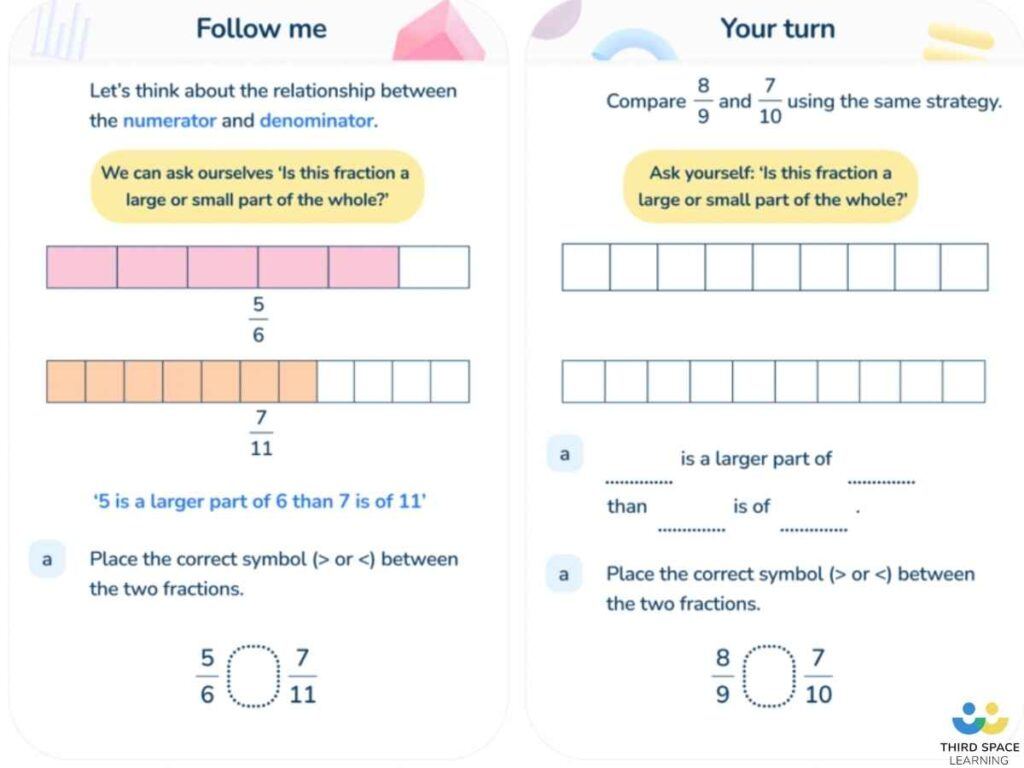
This misconception actually comes from a 2nd grade topic; it is a gap in their knowledge that they have carried almost to the end of elementary school.
When misconceptions like these arise, Skye needs to be able to address not only their result, but also the misconception itself; this is the only way to ensure that any gaps in students’ understanding of math concepts is filled.
Read more: 20 Math Strategies to Improve Understanding

Meet Skye, the voice-based AI tutor making math success possible for every student.
Built by teachers and math experts, Skye uses the same pedagogy, curriculum and lesson structure as our traditional tutoring.
But, with more flexibility and a low cost, schools can scale online math tutoring to support every student who needs it.
Find out moreWhy Third Space Learning’s math interventions are a great way to remediate student misconceptions
Third Space Learning’s approach to remediating student misconceptions is highly effective because the principles of its original, successful human-led program are embedded in the design and training of the AI maths tutor, Skye.
The AI tutoring model ensures each young learner’s specific misconception is addressed through personalized, one-to-one focus and dialog-driven instruction.
- Expert-Trained AI: Skye is trained by former teachers and math experts, who previously designed the extensive tutor training program that included a module specifically on addressing misconceptions. This ensures the AI is equipped with the tools to help students overcome conceptual misconceptions.
- One-to-One Focus: The sessions are delivered one-on-one with the student as the sole focus, which is ideally suited to addressing specific, individual misconceptions in a way that is difficult in a busy classroom of around 30 students.
- Dialogue and Probing: Skye is a conversational, voice-based AI tutor that ensures students verbalize their reasoning and articulate the steps they’re taking. This active participation allows the AI tutor to immediately identify misconceptions and incomplete ideas.
- Adaptive Feedback and Scaffolding: Skye doesn’t just mark an answer wrong; it is trained to apply effective, empowering feedback and provide up to three targeted hints that address the specific mistake. This scaffolded approach helps the student work through problems to ensure the misconception is fully resolved.
- Comprehensive Support: The programs cover every aspect of effective tutoring, including delivery, imparting subject knowledge, student encouragement techniques, and promoting student voice, ensuring the best teaching possible for intervention students.
How Skye, the AI tutor, tackles misconceptions
With thousands of lessons under our belt and plenty of experience identifying and addressing misconceptions, we’ve identified a distinct process for identifying and tackling misconceptions, comprising four stages: preparation, investigation, addressing, and assessing – and this is what we train Skye to do.
N.B. While we refer to what our AI tutor does in each of these stages, most of the content here can also be used by class teachers/TAs, etc.
Stage 1: Make sure you’re ready to identify misconceptions when they arise.
Before trying to fix a misconception, you need to be able to spot one. You can make this easier on yourself by:
- Reading up on common misconceptions for the topic you’ll cover before teaching.
- Establishing an environment that encourages students to articulate their thinking and feel comfortable with making mistakes.
As part of our AI tutoring, we have students sit for an initial Diagnostic Assessment consisting of a series of multiple choice questions on various math topics.
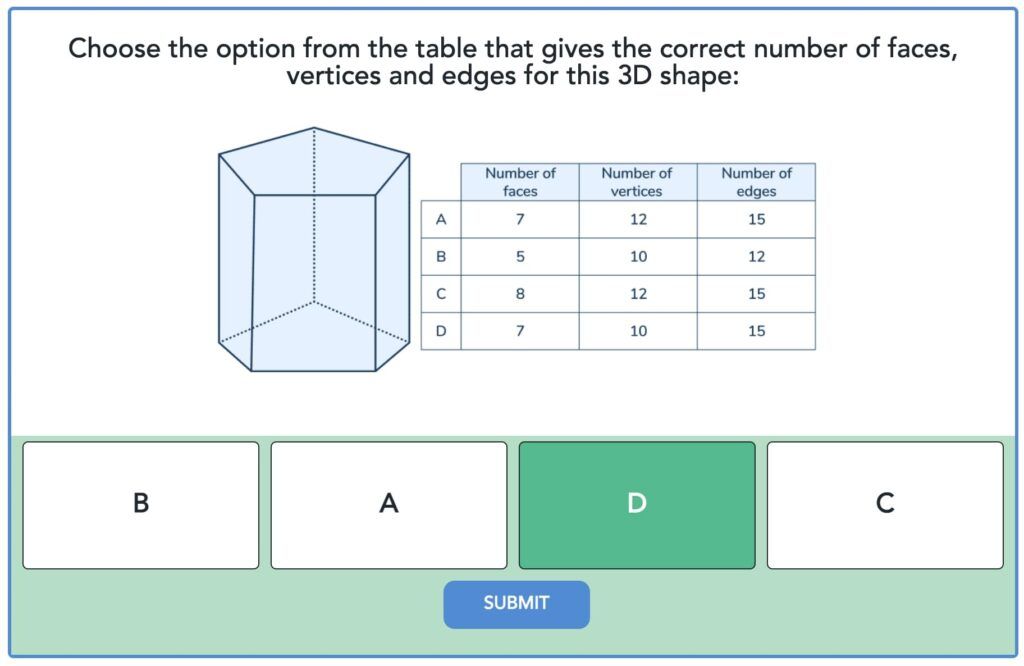
Each question includes one correct answer and three distractors, carefully designed to highlight specific misconceptions a student may have about each topic. This means Skye will have an awareness of every student’s potential misconceptions before they even start teaching, and are prepared to address them if they appear during the lesson.
Stage 2: Investigation
This step is about identifying when a misconception has been made. In order to establish this, Skye:
- Identifies the initial mistake that was made (e.g. the wrong answer to a word problem).
- Facilitates a discussion about the mistake, focusing on having the student explain their thinking e.g. by asking questions such as “How did you come up with that answer?” and “Why do you think it’s correct?” This clears up whether the error was a simple case of ‘slip of the mind’, or a misconception.
- N.B. Skye also encourages students to explain their reasoning even when they get an answer right; sometimes misconceptions can occur without affecting the specific problem being solved.
- Use further questioning to find the specific knowledge gaps the student has; this ensures they are addressing the correct misconception(s).
1-to-1 tutoring means this stage – often one that can take time in a full 30-student classroom – occurs quickly and easily, ensuring misconceptions can be properly addressed in a more timely manner.
Stage 3: Addressing the misconception
It’s here that Skye actually sets about ‘filling’ the knowledge gap. The exact method for this will depend on the topic; for example a misconception about rounding may be best dealt with by using a number line to visually present the concept. Some of the more common misconceptions in elementary school math are explored below.
Where a misconception is relatively small, we train Skye to deal with it immediately. However, it’s important to adapt to each situation based on the resources available.
If a child expresses a misconception during the warm-up activity for example, and the related topic will be covered in the main body of the lesson, Skye may model the correct answer and highlight that a misconception has been made.
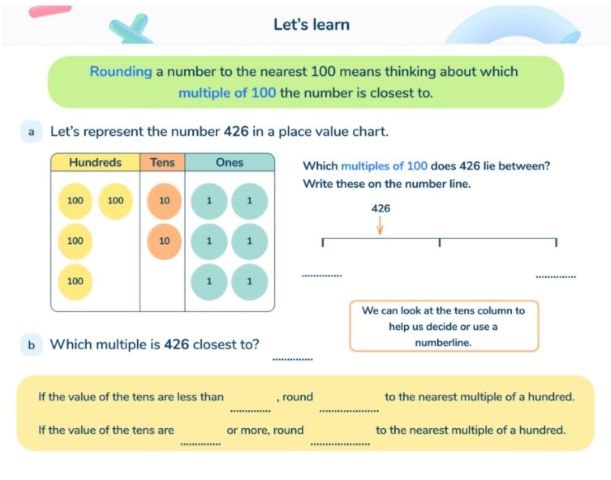
Skye will then address the misconception more thoroughly when it comes up later in the lesson. This way the student is aware of their misconception and the fact that it will be addressed, but valuable time is not spent on something that may well be dealt with in the natural progression of the lesson.
Stage 4: Assessing Learning
In the same manner as any new topic being learned, Skye will gauge a student’s understanding of the material (and therefore whether they have addressed the misconception sufficiently) through assessment and progress monitoring.
In the case of misconceptions, assessment is simple enough: ask the student a similar style of question to the original, or else ask them to re-explain the concept you’ve just been discussing back to you.
If the misconception remains or if the student expresses confusion, it is important to once again investigate their knowledge gaps related to this topic; we want to establish roughly how much time we will need to dedicate to teaching this.
Three Common Misconceptions and How To Address Them
Misconception 1: Using addition to solve subtraction
We spend a lot of time teaching addition and then spend much less time teaching subtraction. With this in mind, it’s no wonder that students often revert to using addition when faced with a subtraction question.
One of the best ways to overcome this misconception is by teaching the part, part, whole model; where the underlying model of both addition and subtraction are clear.
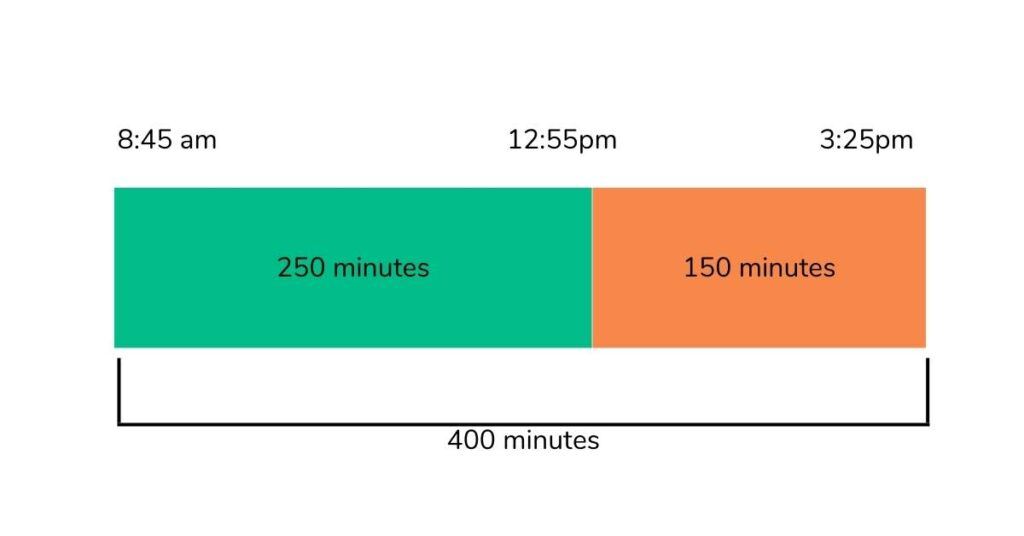
This is much better than rushing through using examples with bigger and bigger numbers, as it means children really understand how subtraction and addition fit together.
It is much better if a child really understands that 5-2=3 and how this relates to 3+2=5 and 5-3=2 and 2+3=5 than if a child can do equations with numbers to 20.
Misconception 2: Understanding money through 1-to-1 correspondence
One-to-one correspondence is one of the key math concepts we teach at the early elementary level, and is central to many of the topics we teach in elementary school.
But when we introduce money we run the risk of confusing children – the idea that one coin could represent 10 of another can be very difficult for students to grasp.
One practical solution is getting children to see how heavy, awkward and fiddly carrying lots of 1 cent coins around is. We can then show them how larger denominations of coins are a helpful solution to this problem – one 10 cent coin being much easier to carry around than 10 1 cent coins, for example.
This can even be represented visually; our online interventions use images of coins in much the same way we might use real coins – after all, 25 1 cent coins take up a lot more space on a screen than a single 25 cent coin!
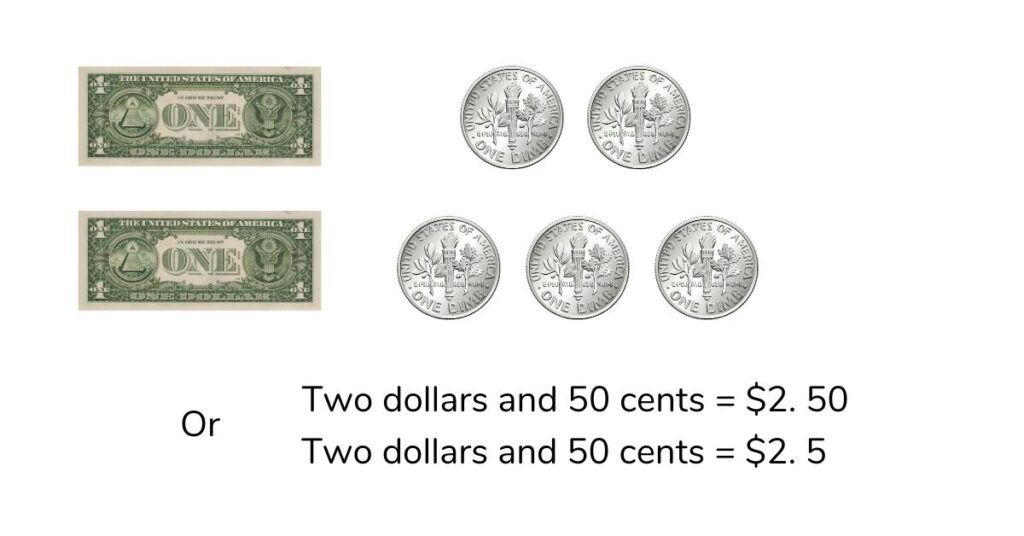
Misconception 3: Confusing square numbers with multiples of 2
The superscript 2, or exponent, in square numbers is a recipe for confusion; students can very easily fall into the trap of assuming this means multiplying by two. Address this head on and use cubes to show 3 x 2 as well as 3², and discuss how these are different.
In our one-to-one online interventions, we make use of pictures of cubes for much the same purpose, as well as using multiplication grids etc.
It’s important not to rush through this: repeat the discussion for lots of different examples to ensure students are secure in their understanding. This technique of showing non-examples as well as examples is another really good way of building deep understanding within a new schema.
Misconceptions can grow to become serious hindrances to students’ math progress if they are left unaddressed, but it is often extremely difficult (if not outright impossible) for class teachers to cover every student’s misconceptions in class.
That’s why we’ve trained Skye to be able to identify and rectify math misconceptions when they encounter them during one-to-one interventions. We help plug gaps in student knowledge to ensure they can make progress in class and beyond!
Do you have students who need extra support in math?
Skye—our AI math tutor built by experienced teachers—provides students with personalized one-on-one, spoken instruction that helps them master concepts, close skill gaps, and gain confidence.
Since 2013, we’ve delivered over 2 million hours of math lessons to more than 170,000 students, guiding them toward higher math achievement.
Discover how our AI math tutoring can boost student success, or see how our math programs can support your school’s goals:
– 3rd grade tutoring
– 4th grade tutoring
– 5th grade tutoring
– 6th grade tutoring
– 7th grade tutoring
– 8th grade tutoring
The content in this article was originally written by a member of the content team Anantha Anilkumar and has since been revised and adapted for US schools by elementary math teacher Katie Keeton.
